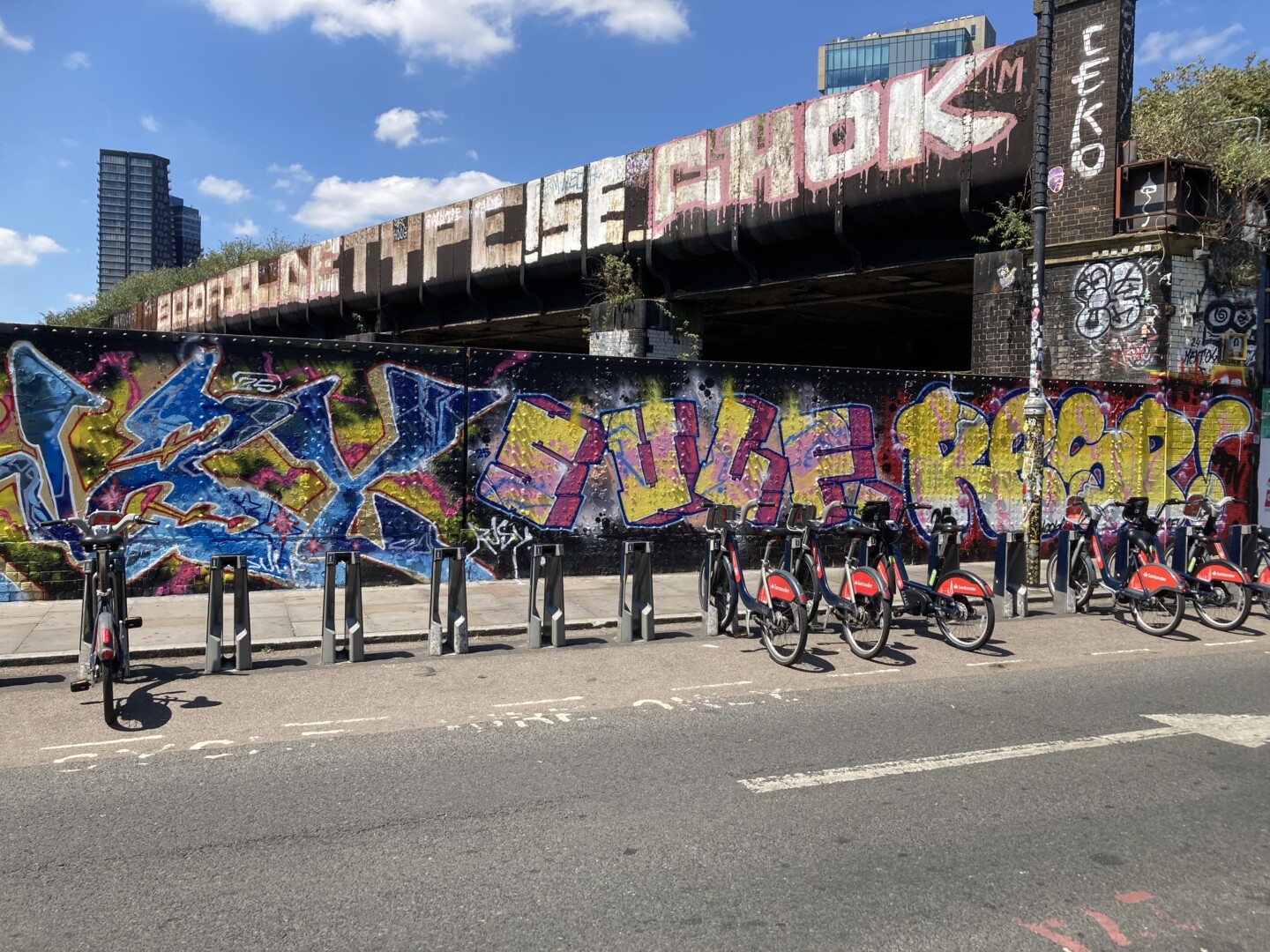Year 12 in Brick Lane for a ‘Far Place Study’ of Contrasts
‘Far Place Study’ investigating lived experience
On Monday 30th June, Year 12 Geography students set off to explore Brick Lane, one of London’s most iconic streets, as part of their fieldwork on place and the impact of both endogenous and exogenous factors.The aim was to discover how Brick Lane’s unique character has been shaped by its history, culture, and changing identity. Historically, Brick Lane has welcomed Huguenots, Jews, and now a large Bangladeshi community; the area is a living example of multicultural London. The locale creates a strong sense of identity, particularly around food, fashion and faith.
Endogenous factors—those that originate from within a place—are key to understanding Brick Lane’s character. Its narrow cobbled streets, Victorian brick buildings, and historic mosques reflect the area’s long-standing East End roots. We observed how architectural features like converted warehouses and original signage (some in Bengali script) maintain the local flavour and hint at the layers of community that have existed here over time. The strong presence of Bangladeshi restaurants and family-run shops also contributes to a sense of continuity and local identity.
Brick Lane has also long been shaped by exogenous factors—outside influences that affect a place. We noted signs of gentrification, such as boutique coffee shops, vintage clothing stores, and trendy art galleries, which contrast with more traditional establishments. Global tourism, international street artists, and investment from property developers are all contributing to a shift in the character of the area. Students completed notes on a ‘walk down the high street’. We were all struck by the mixture of aromas—from sizzling samosas to fresh coffee—and the burst of colour from graffiti art and market stalls. Shopkeepers chatted in a mix of English, Bengali, and other languages. The clash of old and new, traditional and trendy, was everywhere. We felt a strong “sense of place”: vibrant, layered, and alive with stories. It felt both familiar and foreign, rooted and changing. Some students spoke to shopkeepers to find out what their perceptions are of Brick Lane now and in the past. One man said, “Brick Lane is changing fast. It used to be mostly locals, families—now we get tourists, students, everyone. It’s good for business, but also feels like we’re losing something.”
Meanwhile, a café manager said, “I like the mix here. You meet people from all over. But rent is going up, and some older shops are closing. I just hope we keep the community spirit.” Our field trip to Brick Lane helped us understand how geography is not just about maps and data, but about people, identity, and change. By combining first-hand observation with interviews and media analysis, we gained a richer picture of this dynamic area—and how places like Brick Lane are shaped by both the past and the present.







